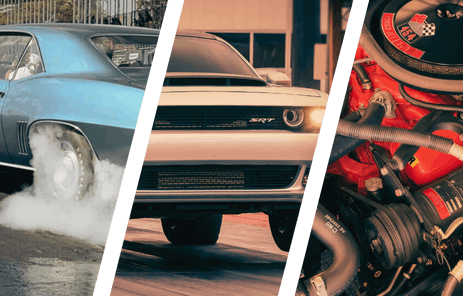 While it may be known for some pretty incredible instrumentation and digital accuracy, Dakota Digital has been keeping busy by adding to its arsenal of digital technology with modular add-ons. These add-ons, called BIMs (Bus Interface Module), allow you to not only read more information from your vehicles’ powertrain, but also to control other functions that are vital to an engine’s reliability.
While it may be known for some pretty incredible instrumentation and digital accuracy, Dakota Digital has been keeping busy by adding to its arsenal of digital technology with modular add-ons. These add-ons, called BIMs (Bus Interface Module), allow you to not only read more information from your vehicles’ powertrain, but also to control other functions that are vital to an engine’s reliability.
One such area that we recently attacked was a dual cooling fan setup on an aluminum radiator. While the cooling fans don’t necessarily have anything to do with a Dakota Digital instrument cluster, it is that cluster’s control unit that can feed information to the cooling fan relays via the Electronic Fan Controller (PN PAC-2750).
For those who don’t have a Dakota Digital gauge cluster, the module will still control your single or dual cooling fan setup as a standalone entity using a number of popular temperature sending units from various manufacturers. Those with the later, plastic-box Dakota Digital instrument control unit will be able to utilize existing information by plugging directly into that control unit.
How Does It Work?
The PAC-2750 functions as a single- or dual-fan controller that will switch on the fan control relay(s) at user-defined settings. For a single fan setup, an included 70-amp relay can be used to switch on and off the cooling fan at certain temperatures, allowing you to define when you want that fan to come on, and when you want it to turn off.
For dual fans, an additional relay is needed, but the same principal applies, allowing the user to turn the first fan on at a lower temperature and the second fan to come on at a slightly higher temperature. Wired connections to the PAC-2750 provide the input from the sender, the power, ignition, and the connections to the relays.

For non-Dakota Digital gauges, you can cycle through various popular senders on the module using its digital readout. It’s a very simple setup with very clear and concise instructions, with visual cues that let you know you’ve set it up properly.
For dual fans, this process is much gentler on your electrical system, turning the second fan on only when it’s needed, instead of turning both fans on at a lower temperature – which is a huge draw on your electrical system.
For Dakota Digital gauges and clusters, the temperature is read from the control box using the sender provided with the gauges. The PAC-2750 receives its data via a single patch cable, which provides not only the temperature reading but also the vehicle speed.
Using a Dakota Digital gauge kit allows one more function of the PAC-2750: it allows you to turn the fans off at a specific freeway speed, with information provided from the speed input sender on the transmission.
For instance, when driving at 70 mph, it’s probably not necessary to have the cooling fans on because air is being forced through the radiator at that speed. The fan controller can be set to turn off the fans at a user-defined speed, making the PAC2750 completely programmable.
We decided to turn the first fan on at 170 degrees, and off at 165 degrees. We chose the fan closest to the upper radiator hose as our first fan because that is where the coolant is going to be hottest. The second fan comes on at just 10 degrees hotter, at 180 degrees, and shuts off at 175 degrees.

Now we have less of a draw on our electrical system than we did before because we’re typically running at less than 180 degrees on a typical day, and the second fan is only used when temperatures are above that, usually on hotter days.
For those with an OBD II compatible vehicle, the engine temperature can be obtained from the ECM with the use of a BIM-01-2 (or previous BIM-01-1), purchased separately. Check out the entire line of gauges, clusters, and BIMs at the Dakota Digital website, and don’t forget to browse around where you might find even more interesting items, such as LED lamps, temperature and air bag controllers, and more.
You might also like
SEMA 2025: Canton Debuts New 350Z LS swap Oil Pan
Canton Racing's new 350Z LS swap oil pan solves clearance issues for Z33 builders. It features track-ready baffling and a 6.5-quart capacity.
















